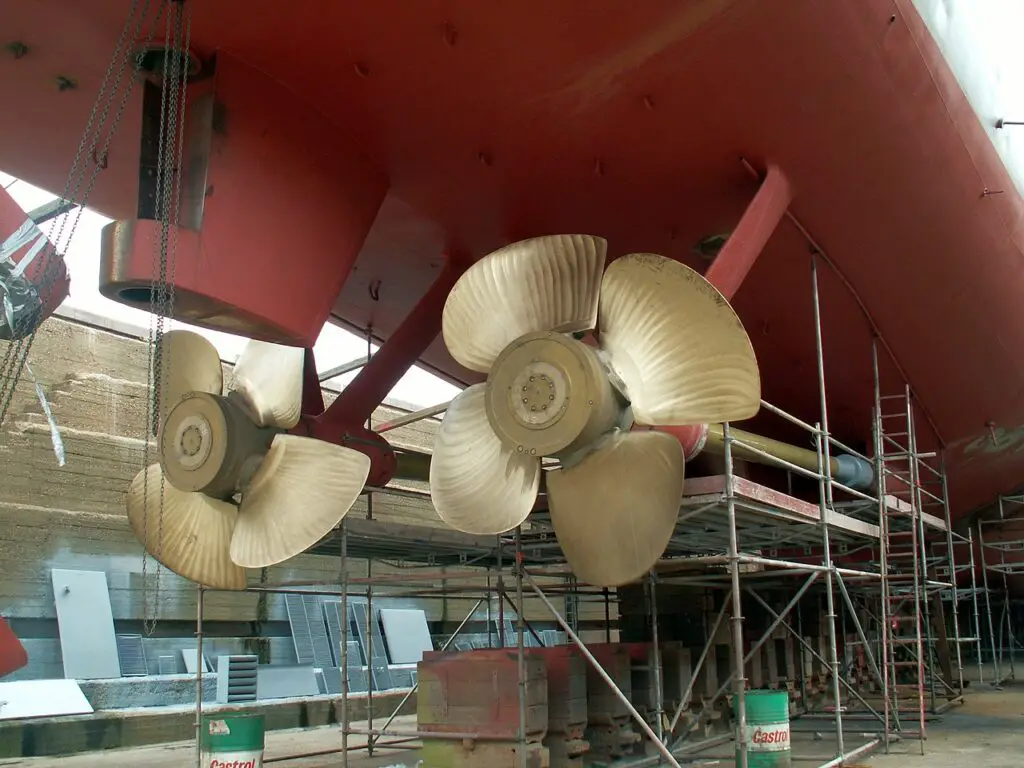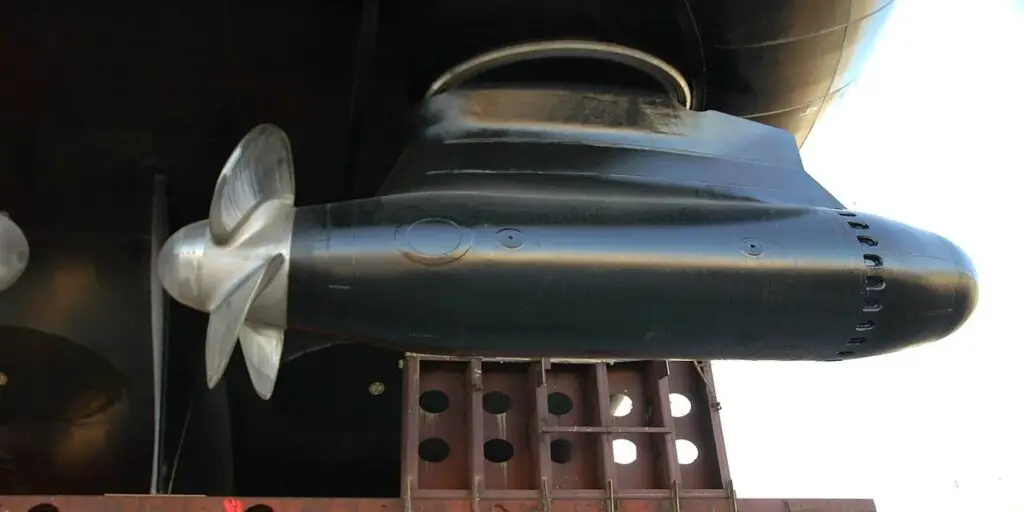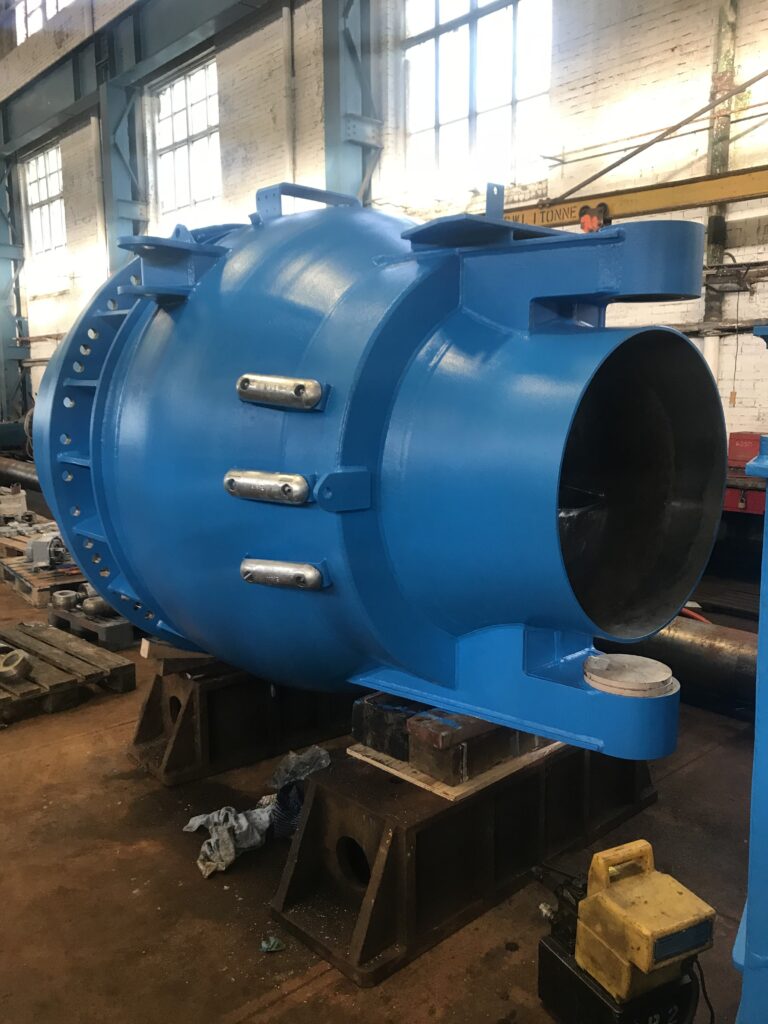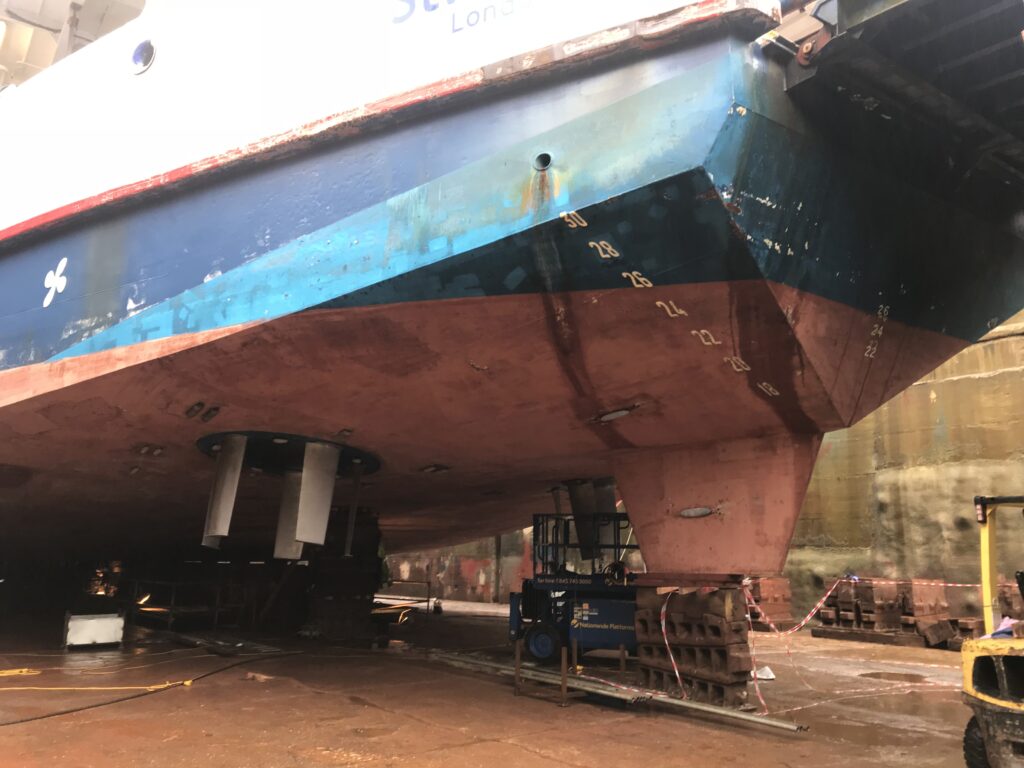Do ships have a reverse gear?
Some ships have reverse gears and some don’t, but it is possible for every ship to move astern (backwards). There are many different types of propulsion and each one works differently when it comes to moving a ship astern.
It is essential that ships are capable of moving astern, as there is not enough space in many ports for large ships to turn themselves around. This means that the ship has to leave the port going backwards. This is usually done with the assistance of one or more tugboat to assist with steering the ship as she moves astern.

By far the most common types of ship propulsion are fixed pitch and controllable pitch propellers. These are the only types of propulsion that you will find on just about all general cargo ships, bulk cargo ships, tankers, and container ships.
Fixed pitch propellers
Fixed pitch propellers are the conventional, old-school design of propeller that most people probably think of when they imagine how a ship moves through the water.
A fixed pitch propeller consists of a propeller with blades that are permanently fixed to the propeller’s hub. The propeller is connected to a shaft, which is then connected to an engine either directly (known as a ‘start/stop’ arrangement) or via a gearbox.
In order for a ship with a start/stop engine to go in reverse, the engine is stopped and the camshaft engages with a different set of cams before the engine is restarted in the reverse direction. The shaft and thus the propeller then turn in the opposite direction, moving the ship astern.
A ship with a gearbox arrangement is slightly easier to use, as the engine can continue running while it is clutched out and changed into reverse gear, much like a car.
Controllable pitch propellers
Controllable pitch propellers are the preferred design for many modern ships. They are sometimes called variable pitch propellers.
With a controllable pitch arrangement, the propeller shaft turns in the same direction all of the time. The blades of the propeller are turned to manipulate how water flows around the propeller, meaning that not only can the ship speed up and slow down without affecting the revolution speed of the shaft, but it can also move the ship astern without the need to stop the engine or change gear.
Controllable pitch propellers are more expensive to install during the shipbuilding process, as they have a larger hub and are more complicated than a fixed pitch propeller, but there are many benefits to having a controllable pitch propeller.
From a manoeuvring perspective, the main benefits of a controllable pitch propeller are that the propeller shaft does not have to change direction in order to make the ship go astern, and a constant rpm can be applied to the propeller shaft.
To learn more, and to see how different propeller types actually work, watch our video about fixed and controllable pitch propellers:
Fixed vs controllable pitch – which is better?
| Controllable pitch | Fixed pitch |
|---|---|
| Constant RPM means better fuel efficiency if manoeuvring frequently | Robust and reliable – fewer moving parts |
| More manoeuvrable | Easier to replace if damaged |
| Greater power when going astern | Cheaper to install |
| Predictable transverse thrust | |
When choosing which type of propeller to install, shipowners will usually consider cost above anything else.
Although controllable pitch propellers are more expensive to buy, install and maintain, they offer greater manoeuvrability and better fuel efficiency for ships which manoeuvre in and out of port frequently, such as ferries or coastal cargo ships.
Because of their improved manoeuvrability, ships with controllable pitch propellers won’t need to take tugboats to help them in and out of port as often, which in the long run costs the shipowner less.
For vessels which carry out long voyages and perhaps only go into port once or twice a month, fixed pitch propellers may be more suitable.
Although controllable pitch propellers are considered to be more manoeuvrable because of their ability to switch between ahead and astern without stopping the engine, they do have one distinct manoeuvring disadvantage compared to fixed pitch propellers.
With a fixed pitch propeller, the effect of transverse thrust when going astern is predictable. The transverse effect will also stop when the engine is stopped. If you’re not sure what transverse thrust is, or if you’d like to learn more about it, watch our video below.
On a ship with a controllable pitch propeller, the direction in which transverse thrust works can sometimes be unclear, even going the opposite way to that which is expected.
Because the propeller keeps turning at all times, the effects of transverse thrust also linger for longer than on a fixed pitch ship, which can make manoeuvring a little more difficult.
Some ships can even go sideways
A ship’s propulsion system allows her to move ahead and astern – and many ships have thrusters which allow them to move sideways.
Thrusters are located in either the bow or the stern – although stern thrusters are very rare except on some cruise ships and ferries – and are essentially small propellers situated within the ship’s hull which face sideways and allow one end of the ship to be pushed sideways.
Thrusters are only effective when going at slow speeds – usually below 3 knots – and their only purposes are to help to fine-tune a ship’s manoeuvres in to and out of port and to help steer the bow when the ship is moving astern.
Do all ships have screw propellers?
Fixed and controllable pitch propellers are not the only propulsion options available to merchant ships. Azipods, water jets, and Voith Schneider units are all popular choices, and they all work differently when it comes to moving a ship astern.
Azipods
Since launching in 1990, Azipods have become a popular choice for cruise ships because of the precise manoeuvrability they offer.

The azipod propulsion system is a propeller which can be turned on a vertical axis around 360 degrees, meaning that shaft speed and blade pitch does not need to be altered to change the ship’s direction. Azipod manufacturer ABB claims that azipods can even save ships up to 20% in fuel costs.
Going astern on an azipod ship is as simple as rotating the azipod to make the ship go backwards.
Water jets
Water jets propulsion systems are most commonly found on smaller vessels such as coastguard boats, trawlers, and pleasure craft – although the system is becoming more common on high-speed catamaran ferries.
On ships using a water jet system, water is taken into the vessel through an intake system on the hull before being rapidly ejected from nozzles at the stern of the vessel to propel the vessel forward. The direction of the vessel can be changed by rotating the nozzles, with a motion of 180 degrees being possible on many vessels.

To move the vessel astern, a device called a ‘deflector’ is used to change the direction of the water flow through the nozzle. This also allows the ship a certain amount of steerage when going astern although a bow thruster is almost always used in addition.
Voith Schneider
The Voith Schneider unit was invented in the late 1920s and its design has not changed since.
Consisting of a series of rotating hydrofoil blades that extend downward from a circular plate fitted to the bottom of a ship, a Voith Schneider unit allows a vessel to change speed and direction by altering the pitch of its blades while maintaining a constant RPM, in a manner similar to a conventional controllable pitch propeller.

In the photo above, you can see something that looks like a rudder – but it’s actually a skeg, which is static and helps with the directional stability of the ship.
The Voith Schneider unit offers such exceptional manoeuvrability that no rudder is required, although multiple units are usually needed to provide sufficient power and steerage.
Unlike other propulsion systems, Voith Schneider units are typically placed at both ends of the ship, not just the stern. This allows for equal manoeuvrability regardless of the direction of the ship – particularly useful for tugboats and double-ended ferries!
Can ships steer when going in reverse?
A ship’s rudder requires water flowing over it in order for it to be effective. This means that ships with a traditional fixed or controllable pitch propeller configuration cannot effectively steer using their rudder while going astern.
This is why ships require help when they are going astern. Ships going backwards can be steered in two ways – either by using a bow thruster or with the use of tugboats. The safest option is to have both a bow thruster and a tug!
Ships which have azipods are able to steer themselves when going astern as the azipod can be rotated to propel the ship in any direction.
Water jets can use their deflector to steer astern, while Voith Schneider units have full manoeuvrability regardless of which direction they are going.
So while it may be true that all ships can move backwards, most are not able to steer effectively while doing so.
